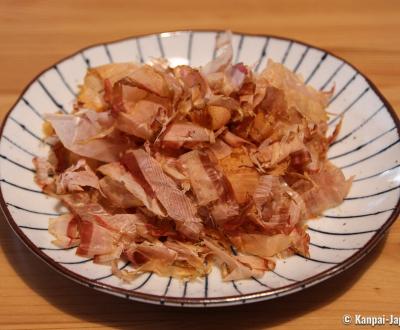Katsuobushi
The Delicate Bonito Flakes
Katsuobushi is a key ingredient in Japanese cuisine, and comes in the form of dried bonito fish flakes. It has been produced and consumed throughout Japan since at least the 14th century, and Ise-Shima’s katsuobushi is particularly renowned.
Katsuobushi (鰹節) is an essential condiment made from skipjack tuna (Katsuwonus pelamis), also known as striped tuna. This natural flavor enhancer is rich in umami, one of the five basic tastes. Also known as "dried bonito," katsuobushi is in fact the result of a complex fabrication process and the end product resembles a dark chunk of wood and is known as the hardest food in the world. Broking a piece of katsuobushi reveals its inner crimson to purple colors, the hues depending on the maturation stage.
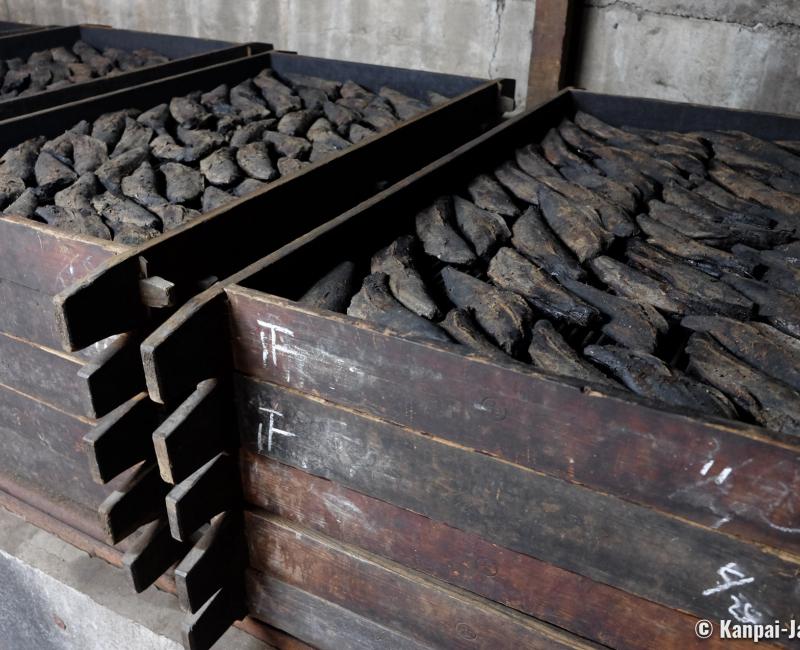
A laborious traditional fabrication
Many steps are necessary before the obtention of the famous flakes. The head and the insides of the fish are first removed, and only the flesh is used in the preparation of katsuobushi. Then the process goes on:
- The fish carcass is cut into a few lengthwise big chunks, a step called namakiri (生切り),
- These pieces are placed on large rectangular plates and cooked in simmering water during about 2 hours (shajuku 煮熟 whose kanji respectively mean "simmer" and "mature"),
- The cooked fish is then immediately cooled down and deboned (honenuki 骨ぬき). It is a delicate process only made by hand. This step aims at removing all impurities in the final product, and to avoid damaging the block due to the difference in reaction of the bones and the flesh during the smoking stage,
- After that, the fish is dried for the first time to the heat of a firewood for preservation (baikan 焙乾, "roast and dry"). During about a one-month process, it will be smoked daily, then left to rest to remove all trace of humidity and develop its aromas until arabushi is obtained.
Arabushi (荒節, also called onibushi 鬼節) can be shaved and used the same way as katsuo bushi. It is by the way the most consumed and the cheapest version of it.
The superior quality katsuobushi is obtained after a last fermentation stage. The blocks of arabushi are first polished to remove any smoking residuals and help the penetration of the fermenting agent: Aspergillus glaucus (or Eurotium herbariorum, the same mould that develops on jam when the lid of the jar is not correctly closed). The step of kabitsuke (カビ付け, literally "covering in mould") aims at reinforcing the conservation of katsuobushi, but also at refining its taste and make it mellower.
Cycles of closed room fermentation and drying under the sun must be repeated during at least two weeks to obtain a high quality kutsuobushi named karebushi (枯節), and up to 6 months for the honkarebushi (本枯節) premium quality. Katsuobushi of superior quality have lighter hues, contrary to arabushi, and a powdery look due to the mold cultivation.
Visit of Katsuo Ibushi Koya workshop
Located in Shima City, in the east of Mie prefecture, Katsuo Ibushi Koya (鰹いぶし小屋) is a fabrication workshop opened to visitors from all around the world, who would like to discover the traditional production of katsuobushi and its original taste. The convivial guided tour is the occasion to gather plenty of cooking tips and collect a bag full of omiyage souvenirs.
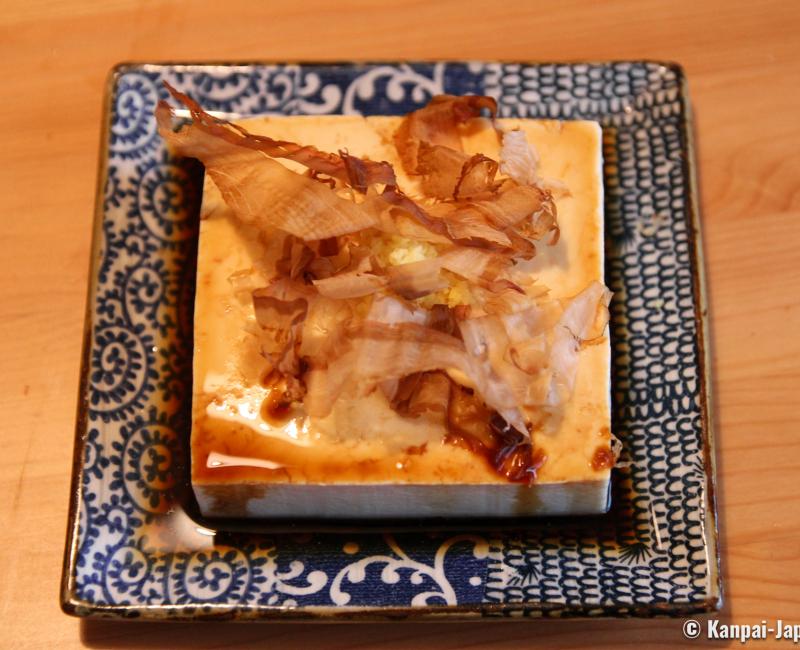
How to use katsuobushi in Japanese cuisine?
Due to its complex fabrication process, the time and handwork required, katsuobushi is a relatively expensive product (on average $70 the kilogramme), but it is not necessarily a problem when using it on a daily basis. In the same manner as truffles, the powerful flavor of the bonito flakes brings aroma to the dishes with only a few grams. Their main uses are:
- As a key-ingredient for the dashi broth, along with kombu algae. Dashi is the base to all broths for ramen 🍜 and udon noodles, nabe hotpot, many sauces and of course, miso soup,
- As little flakes (furikake ふりかけ) sprinkled on plain rice, or on okonomiyaki savory crepes, on takoyaki octopus’ balls, stir-fried soba noodles, etc.
- The shaving scraps (kezurikasu 削りカス) that are even smaller than the flakes, are combined with soy sauce to form the okaka (おかか) a filling used in the onigiri 🍙 okaka rice balls, a classical snack that can be found in any konbini as well as in the family bento.
Katsuobushi can also be served alone, in relatively thick chips, to enjoy in the same manner as slices of a mature raw ham.
The strength of the smoked and fermented fish aroma is a natural flavor enhancer.
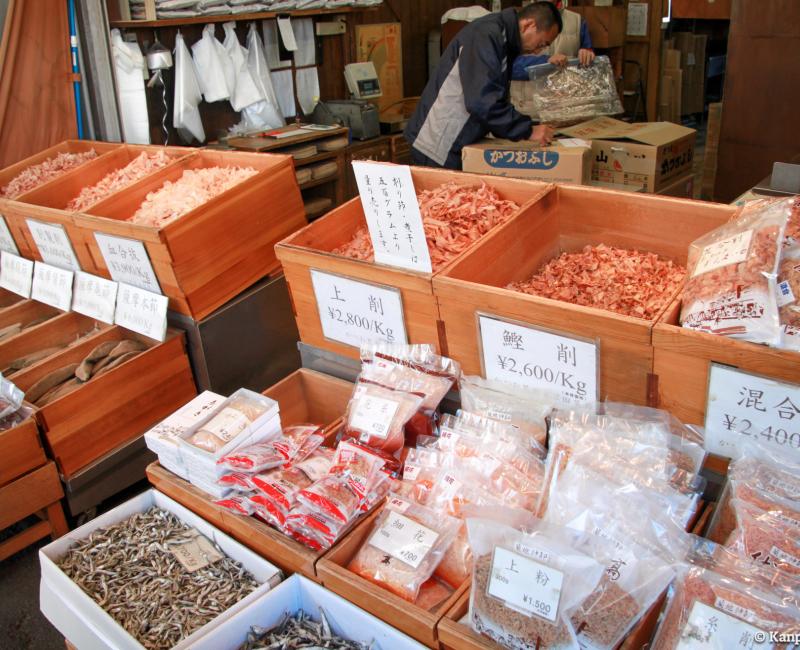
Where to buy bonito flakes?
Katsuobushi can be easily found in Japanese grocery stores at fish markets, shotengai shopping arcades and supermarkets. It is usually sold already shaved in flakes of various sizes, depending on the intended use and the quality of the product. It can be conditioned in small brewing bags to flavor a soup or a broth, or in powder for a daily use.
The katsuobushi of superior quality (karebushi and honkarebushi) is generally sold as blocks that must be shaved with a traditional shaver. It looks like a wooden box with a blade set on the top and a drawer underneath to collect the fish chips.
However, in Europe direct importation of most katsuobushi made in Japan is forbidden due to smoking wastes deemed dangerous for health. Some katsuobushi producers took this in consideration and have adapted their fabrication process. Simultaneously, local productions have also developed especially in Spain and Western France.
Katsuobushi used to be offered as a good omen gift due to the homophony between the name of the fish katsuo (鰹) and katsuo (勝男) meaning "victorious."
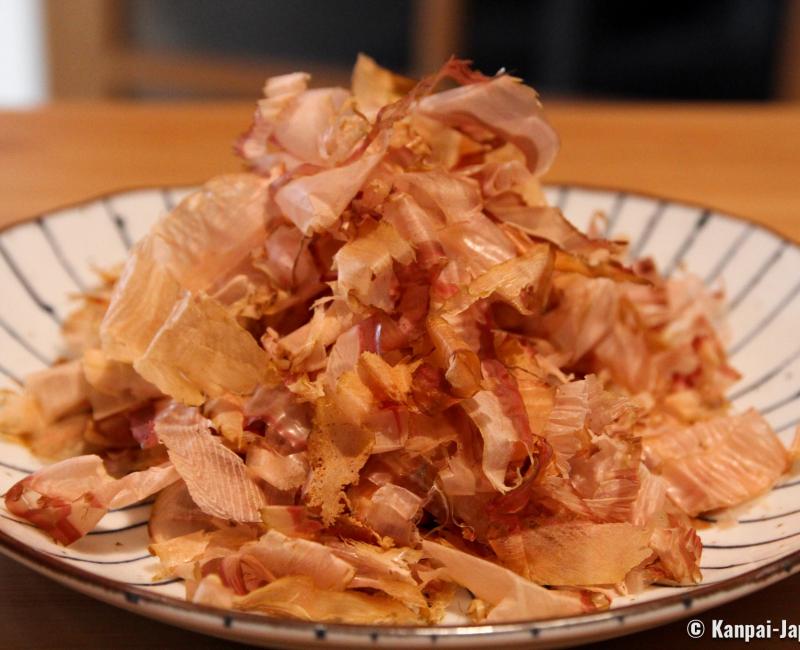
Vocabulary

